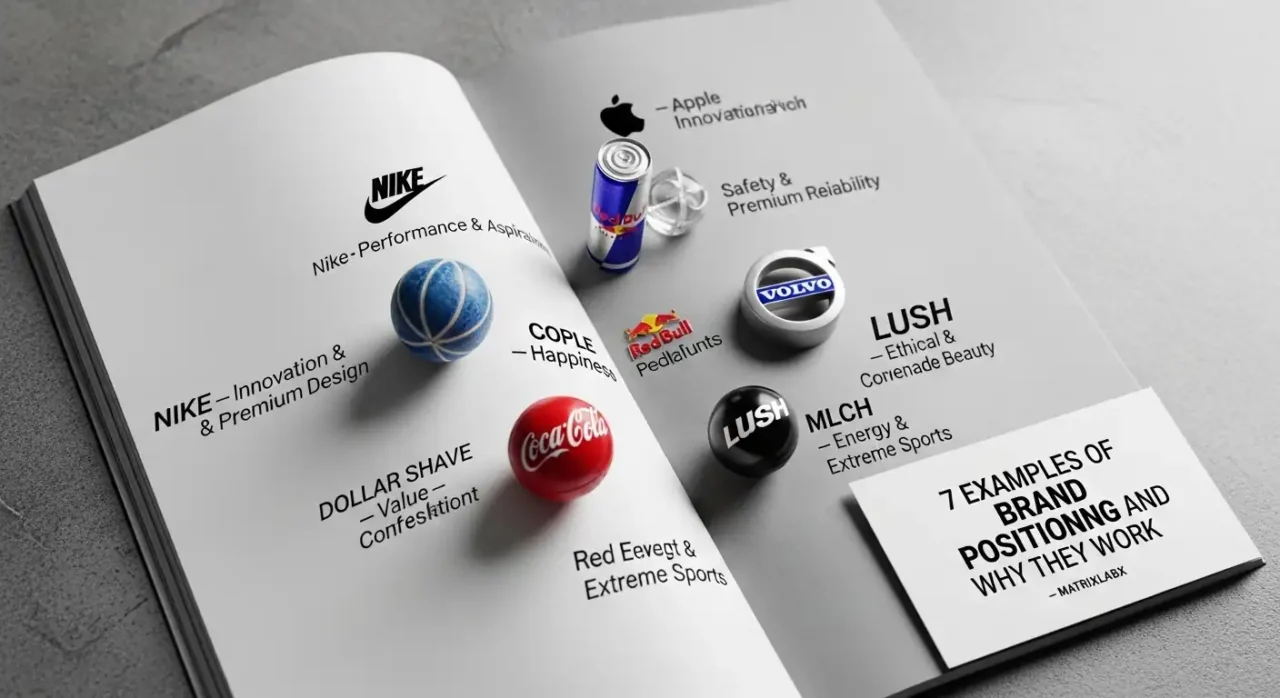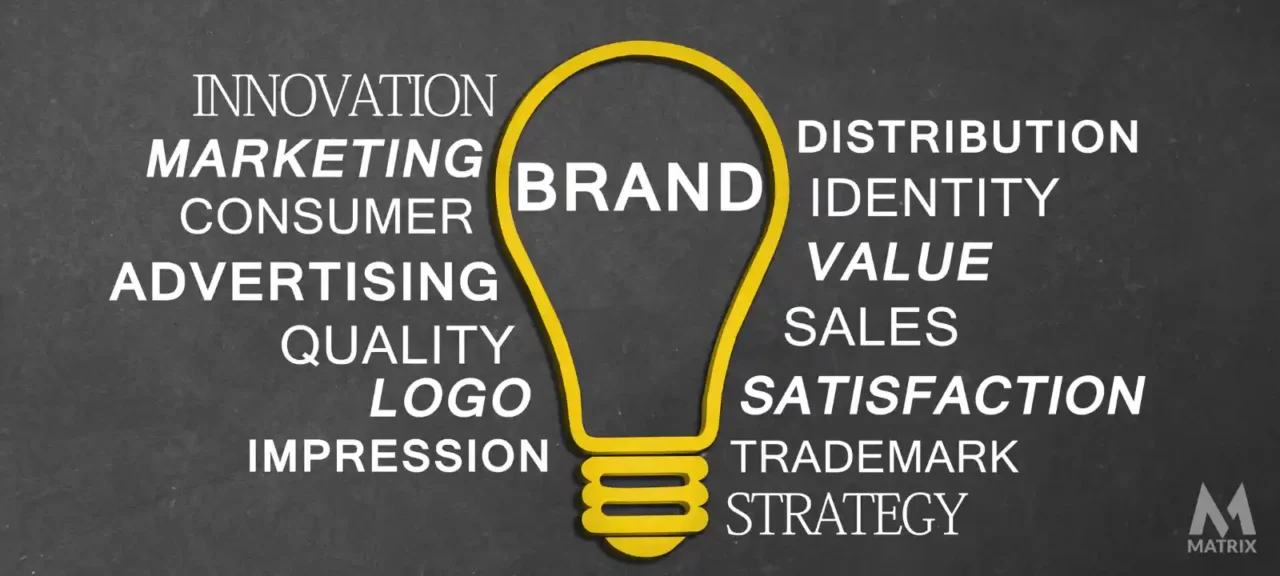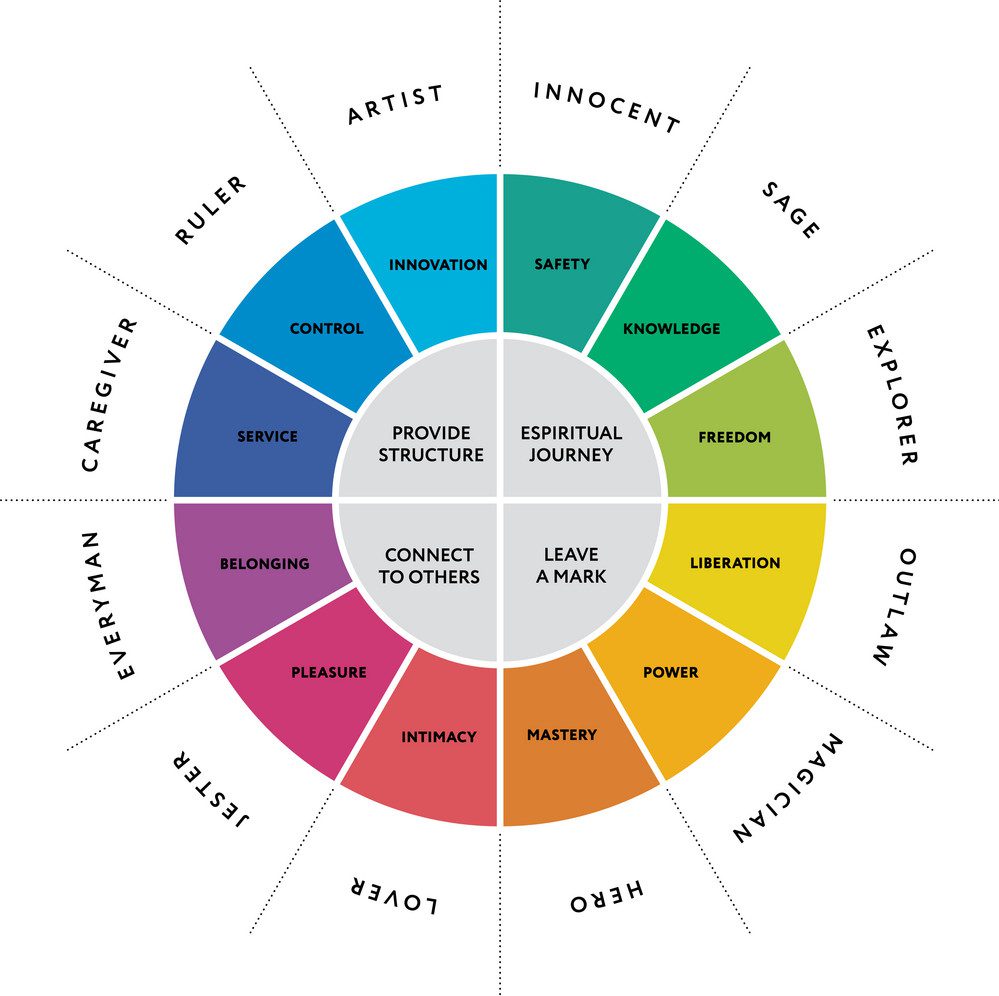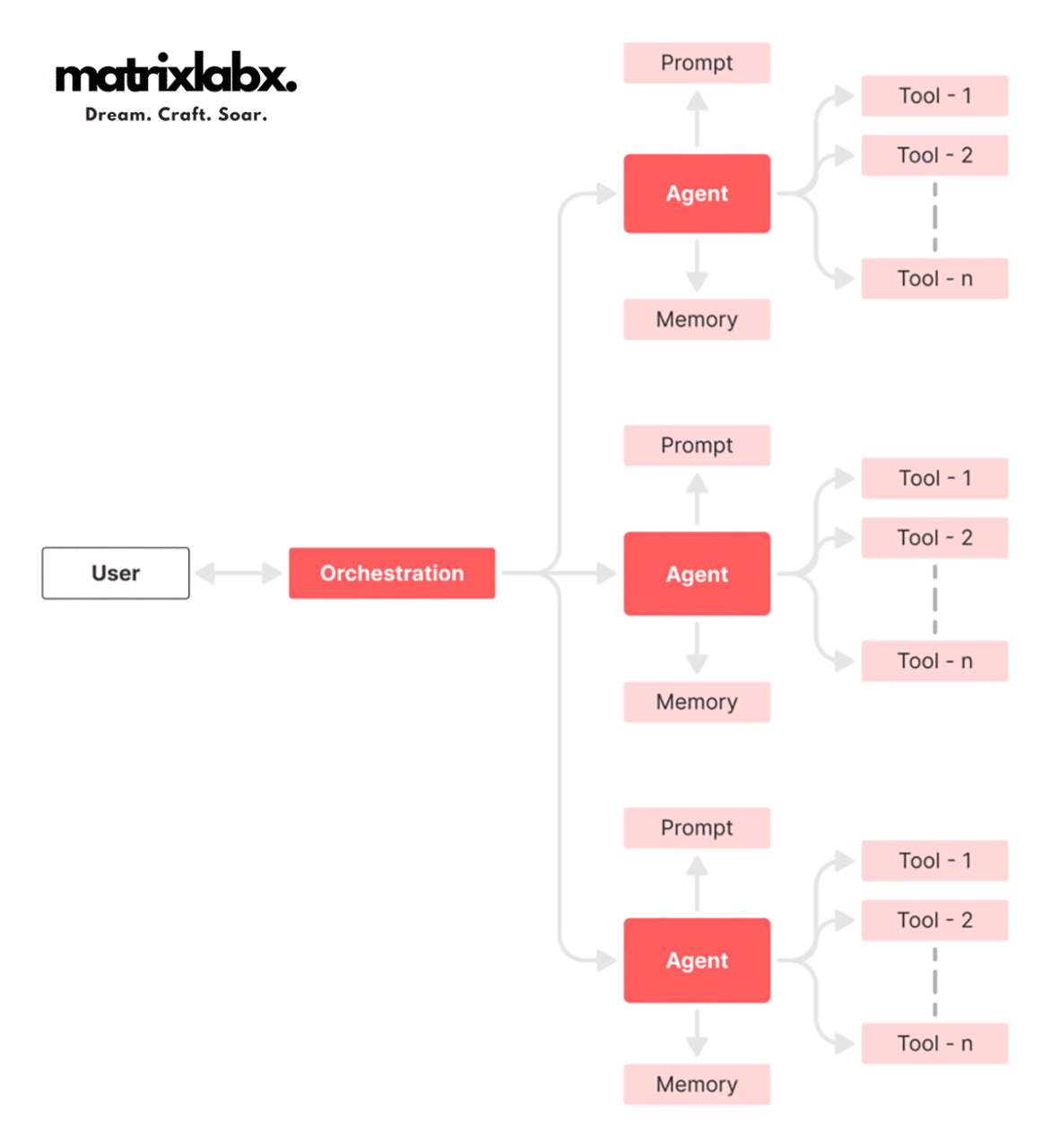15 Winning Examples of Brand Positioning and Why They Work
15 Winning Examples of Brand Positioning and Why They Work
Emily had been a content manager for four years, tirelessly elevating her company’s brand. However, despite her best efforts, the brand’s identity was vague, and its message lacked the punch to stand out. Engagement metrics were low, and every campaign felt like an uphill battle. She poured over blog posts, social media content, and emails, but the disconnect was always palpable—audiences weren’t connecting with the brand.
On Wednesday morning, feeling the weight of another lackluster report, Emily sat at her desk scrolling through marketing trends when an invitation caught her eye: AIBrandPad Demo—Exclusive Preview Before Denver Startup Week! The tagline promised, “AI-driven branding insights to transform weak brands into memorable market leaders.” Intrigued, she immediately signed up, curious if this tool might offer the breakthrough she needed.

A few days later, Emily was in a sleek demo room filled with startup founders, marketers, and designers, all abuzz with anticipation. A representative from AIBrandPad, Sarah, took the stage, outlining the platform’s capabilities. “AIBrandPad is not just about generating content,” Sarah explained. “It’s about defining your brand’s core and strategically shaping every touchpoint to resonate with your audience.”
With a live demo, Sarah showed how AIBrandPad analyzed audience data, values, and visual trends to craft a cohesive brand narrative. Then, she revealed the tool’s “Brand Compass” feature, which allowed users to test different tones, personalities, and visuals to find the most effective brand identity. AI Blog Post Generation GPT Agent: Unleash the Future of Content Creation
Watching the demo, Emily felt a surge of hope. Her brand had been missing this: clarity, coherence, and a way to dynamically test which approaches resonated most with her audience. She envisioned AIBrandPad streamlining her campaigns, eliminating trial-and-error, and allowing her to focus more on creative growth rather than repetitive adjustments. With this tool, she could reframe her content, sharpen her message, and, perhaps most importantly, finally connect with her audience.
After the presentation, Emily rushed to sign up for AIBrandPad’s early access program. By Denver Startup Week officially kicked off, Emily was already incorporating AIBrandPad’s insights, watching her brand metrics climb. She felt the spark of excitement return for the first time in months. Her brand finally had a voice, and thanks to AIBrandPad, she knew exactly how to amplify it.
Due to their effective branding strategies, Coca-Cola, Apple, and McDonald’s have become household names.
How do these businesses achieve success? Brand positioning examples are a good starting point, but should be used in product development.
Market requirement documents and product requirements documents set the path to success.
You want to create a brand positioning statement that conveys your company’s value offering and sets you apart. With Matrix Marketing Group, you’ll get exactly that.
Our experienced marketing professionals will work with you to craft a creative, memorable statement that encapsulates your brand’s uniqueness.
Discover unique brand positioning examples, including a comprehensive PPT, to help you. PPC Digital Benchmarks by Industry
Have you ever developed a unique value proposition that is important in building a successful business position? When clients come to us, they are overwhelmed by the challenge of creating true value. You may be pursuing the wrong task and be insecure about the next steps, or learning what customers want may be difficult.
We’ve seen our clients frustrated by unproductive meetings and misaligned teams. They are often involved in bold, flashy projects that fail to deliver results. We can see all the products and CEOs who are disappointed by the failure of a good idea.
To begin with, you must understand the patterns of value creation, leverage the experience and skills of your team or outside help, and avoid wasting time with ideas that won’t work. Thus, you can see that brand positioning begins before the product is even developed.
Ask a marketing agency, and they’ll say, “Oh, you’ve got a product, and we’ll position it without even understanding if that’s what the market wants.” Matrix will design, test, and deliver what customers want.
The heart of value proposition design involves applying tools to a messy search for Value propositions that customers want, and then keeping them aligned with what customers want in a post-search.
Our value proposition design shows you how to use the value proposition in designing and testing to develop great value propositions in an iterative search for what customers want. Your value proposition design is a never-ending process in which you must constantly evolve your value propositions to keep them relevant to customers and market trends.
This blog post examines 15 winning brand positioning examples and why they work well. You’ll learn what it takes to create an impactful brand strategy that helps your company reach its full potential. Along with exploring some of the world’s best brands, you’ll also find tips for creating a powerful position in your market. How to Choose the Right AI Digital Marketing Agency: A Comprehensive Guide for Marketing Managers
This article reviewed 15 examples of winning brand positioning and explained how each succeeded. We also offered some insights into why certain strategies work better than others. If you want to improve your brand positioning, check out our other resources, where we delve deeper into the topic and offer practical tips for businesses.
So, let’s dive into these winning brand positioning examples and see what lessons we can learn! Below are examples of award-winning websites.
Are you looking to create a powerful brand positioning for your business?
Learn from the best and see how companies like Coca-Cola, Apple, and McDonald’s have become household names through their effective branding strategies. Discover what makes them stand out from the rest and get tips on creating an impactful brand strategy of your own.
With this article, you’ll learn 15 winning examples of successful brand positioning that will help your company reach its full potential. Plus, gain insights into why certain strategies work better than others to ensure your business stands out.
Please read our blog post to learn more about these 15 winning examples of successful brand positioning!
Brand positioning is how consumers identify and connect with your brand. It’s comprised of your company’s key qualities and values. Brand positioning can be conveyed in different ways, including tone and voice, visual design, and how your company represents itself in person and on social media.
In today’s crowded marketplace, it’s more important than ever to have a strong brand positioning strategy. But what does that mean?
Brand positioning is how you differentiate your product or service from your competitors. The unique value proposition sets you apart and tells your target audience why they should care about your company.
There are many ways to approach this, but not all strategies are equally effective. To help give you some inspiration, we’ve compiled a list of 15 winning examples of brand positioning from some of the world’s most successful companies. See what works for them – you can adapt some of these techniques for your business!
Why does the CMO struggle with brand positioning plans?
Brand positioning plans require Chief Marketing Officers (CMOs) to think creatively and strategically about differentiating their product or service from the competition.
This is often difficult for CMOs due to a lack of in-depth knowledge about their target audience, competitive landscape, and industry trends. Furthermore, marketing strategies can quickly become outdated due to changes in the market, making it difficult for CMOs to stay ahead of the curve.
To develop an effective brand positioning plan that resonates with customers and stands out from competitors, CMOs must thoroughly understand how their product or service can benefit customers and why it differs from similar offerings.
The Skill Gap: Why 85% of Marketers Are Not Ready
The Skill Gap: Why 85% of Marketers Are Not Ready highlights the urgent need for upskilling in a rapidly evolving digital landscape. Advanced technologies like AI, data analytics, and automation are outpacing traditional marketing expertise, leaving most professionals unprepared to adapt and compete effectively.
They need to accurately identify market gaps and opportunities for innovation. With these insights, CMOs can craft an effective strategy that emotionally engages customers.
Furthermore, brand positioning plans require companies to make bold decisions that may not always be intuitive or supported by data.
For example, some companies may focus on edgy messaging that stands out from traditional methods used by competitors to capture more attention from potential buyers. This approach requires marketing teams and CMOs to take risks instead of relying solely on proven tactics developed through research and testing. AI vs. Human Content: Navigating the Future of Storytelling
What brand positioning is, and why it’s important

Brand positioning is the fundamental concept behind how a business stands out from its competitors by creating and communicating a unique identity. It involves understanding your target audience and their needs and developing messages that will resonate deeply with them.
Brand positioning is key to driving customer awareness, trial, and loyalty. Differentiated messaging can help set businesses apart not only in terms of the products they offer but also in terms of their overall impression within the market.
By developing effective positioning strategies, businesses can better differentiate themselves from the competition, create loyal customer relationships, and generate long-term success in the marketplace.
Your Blueprint for SEO Success in 2025
Whether you’re a business owner, marketer, or seasoned SEO professional, this guide is tailored to give you a competitive edge in the evolving digital landscape. Get SEO Pricing.
Examples of Brand Positioning that have successfully positioned themselves in the market.
Succeeding in the competitive world of marketing means defining a unique brand position. Companies must identify what sets them apart from their competitors and how to offer something unique to their customers.
To truly stand out in the marketplace, brands must be able to make themselves highly recognizable.
Examples of brand positioning from big-name companies that have successfully implemented such strategies are:
These global giants have used creative campaigns to communicate their values and create memorable customer experiences. Other successful brands include:
- Ikea
- Burger King
- Ford Motors
- Mazda Motors
- BMW Group
- Target
- Audi
They have also effectively positioned themselves in the market. These companies have taken the time to craft detailed positions that speak to their target audiences and drive customer loyalty on all levels.
Each brand has achieved success through its examples of brand positioning.
Each of these 15 brands has succeeded in positioning itself by creating a unique identity. They have identified the advantages that set them apart from their competitors through careful market research.
These brands have created a successful positioning strategy by leveraging these advantages, highlighting what sets each brand apart, and consistently communicating that to the public.
From clear objectives to creative campaigns, each company has identified what resonates with its target audience and developed an effective positioning strategy to maximize success.
Insights into why certain positioning strategies work better than others and examples of brand positioning
Certain brand positioning strategies consistently outperform others. Although many factors are involved, a winning strategy hinges on understanding the subtle nuances of your target audience’s wants and needs.
By focusing on what resonates most emotionally and psychologically and tailoring its messaging, a brand will more likely capture an audience’s attention and loyalty.
Whether you’re a local café looking to attract more customers or a global Fortune 500 business striving to dominate its industry, understanding how to reach your customers best should come first. Ultimately, having a firm grasp of this information will help ensure that you select the right positioning strategies for success.
How the 12 archetypes play into your brand positioning

The 12 archetypes are an effective tool to help businesses define, design, and communicate their brand positioning. These archetypes connect brands with customers emotionally, enabling businesses to create a sense of familiarity, trust, and loyalty.
When creating a brand positioning strategy, it’s important to consider the 12 archetypes. By understanding which archetypes you can align your brand with, you can craft a more compelling message that resonates better with your target audience.
The 12 archetypes are divided into four distinct categories: Caregivers (those who nurture and support others), Creatives (innovative and imaginative thinkers), Heroes (achievers and go-getters), and Outlaws (those who challenge the status quo). Each archetype has its characteristics—such as a particular ethos or mission statement—that help shape how customers perceive the brand.
By leveraging these archetypes, businesses can increase customer engagement and trust in their products or services. For example, suppose a company wants to create a loyal customer base among young adults. In that case, it could position itself as an “Outlaw” by promoting edgy messaging that stands out from the competition.
Other companies may emphasize their “Caregiver” qualities instead. They can demonstrate their commitment to helping others in need by emphasizing philanthropic initiatives or socially conscious values. By associating their brand with positive emotions like trustworthiness or compassion, they will likely be able to capture more attention from potential customers.
When considering any brand positioning strategy, business owners need to think about how best to connect with their target audience on an emotional level. By leveraging the 12 archetypes, companies can create memorable campaigns that establish strong customer relationships based on shared values, beliefs, and purpose.
Tips for businesses that are looking to improve their brand positioning

Businesses looking to improve their brand positioning should consider analyzing some winning examples. Studying successful brands and their strategies to establish a distinct presence can help businesses identify target audiences, create an effective tagline, and determine which features define their product offering.
A clear definition of these elements can help immensely with allocating budgets and focusing marketing activities toward areas that will be most effective in establishing an attractive position in the eyes of prospective customers.
Businesses need to ensure that their message translates across multiple channels so that all touchpoints accurately deliver on their brand promise. By taking proactive steps like these, businesses can develop and execute an effective brand positioning strategy that sets them apart and generates positive results.
To improve your brand positioning, it’s essential to understand what brand positioning is and why it matters. Once you have a solid grasp of that, you can start looking at examples of brands that have been successful with their positioning strategy.
What issues are developed from a poor position strategy?

Brand positioning can result in several issues for businesses. A lack of clear messaging and differentiation from competitors can lead to customer confusion, undermining the company’s ability to build trust and loyalty. With an effective positioning strategy, businesses can accurately target their desired audience, making capturing attention easier and creating meaningful connections with their customers.
Moreover, poor brand positioning can help a company’s reputation, as customers may become aware that the business must adequately address their needs or provide reliable products or services. However, this can damage the company’s public image, making customers frustrated with the brand, less likely to return or recommend it to others.
Finally, effective positioning strategies can help companies focus on the right areas when allocating resources. Without understanding what makes their product unique or differentiates them from competitors, businesses may invest time and money into unnecessary activities that do not contribute to success.
Why businesses struggle with value position design.

Many businesses fail to develop winning brand positioning plans because they do not understand how to connect emotionally with their target audiences.
Since feelings are powerfully linked with consumer buying decisions, CMOs must be able to identify which emotions are most likely associated with their products or services to create memorable campaigns that establish strong customer relationships based on shared values and purpose.
Many businesses struggle to establish a strong brand positioning in the market, leaving them uncertain about how to differentiate themselves from competitors and attract potential customers.
Picture yourself as a business with an effective brand positioning strategy that resonates with your target audience and stands out. You understand what makes your product or service unique and how it can benefit customers, enabling you to build trust and loyalty.
With 15 winning examples of successful brand positioning plans, tips for creating a winning branding strategy, and insights into why CMOs may have difficulty crafting these plans, learn how to create an effective brand positioning plan today!
Creating an effective brand positioning plan is essential for any business looking to stand out and build customer relationships. We saw how the big brands do it, with brand positioning examples.
Businesses can create a winning strategy that resonates and drives sales by leveraging examples of successful branding strategies, understanding why CMOs may have difficulty crafting these plans, examples of brand positioning that might help, and learning how to connect emotionally with target audiences.
With this knowledge, it’s time to take your business to the next level by developing an effective brand positioning plan today! Examples of Brand Positioning and Pricing.
How Matrix Marketing Group can help with effective brand positioning
Matrix Marketing Group is a full-service digital marketing agency with a team of experienced professionals dedicated to helping businesses create effective brand positioning strategies. Our team has the know-how and resources to research competitive landscapes, target audiences, and industry trends to identify market gaps and innovation opportunities.
We also have an in-depth understanding of how to emotionally connect with customers through creative campaigns that stand out from competitors. Our team will work closely with clients to develop bold messaging strategies that capture the attention of potential buyers and establish strong customer relationships based on shared values and purpose.
In addition, Matrix Marketing Group offers strategic advice on how businesses can leverage data-driven insights to stay ahead of the curve when developing effective brand positioning plans. We understand the importance of staying up-to-date on changing trends to craft timeless yet current campaigns.
At Matrix Marketing Group, an effective brand positioning plan should be tailored to meet each business’s unique goals and needs. That’s why our team goes above and beyond when crafting custom strategies for our clients. Through extensive research, creative planning, and strategic advice, we strive to provide our clients with winning branding solutions that resonate with their target audience!
Examples of brand positioning in marketing
A chief marketing officer (CMO) plays a crucial role in developing and implementing brand positioning strategies. Brand positioning refers to establishing how a brand is perceived and differentiated in the minds of consumers. It involves defining the brand’s unique selling proposition (USP), identifying its target audience, and crafting consistent messaging that resonates with that audience.
Examples of effective brand positioning:
- Apple: Apple has consistently positioned itself as a premium brand offering innovative, high-quality products. The company’s sleek designs, cutting-edge technology, and focus on user experience have made it a favorite among tech-savvy consumers.
- Nike: Nike has positioned itself as a brand that inspires and empowers athletes of all levels. The company’s “Just Do It” tagline has become a global symbol of motivation and perseverance. Nike’s focus on performance and innovation has made it a leader in the athletic apparel industry.
- Coca-Cola: Coca-Cola has positioned itself as a brand representing happiness, refreshment, and nostalgia. The company’s iconic logo and its association with positive imagery have made it one of the most recognizable brands in the world. Coca-Cola’s marketing campaigns often focus on sharing and connecting with others, reinforcing its association with positive emotions.
To make brand positioning more effective, CMOs should consider the following strategies:
- Conduct thorough market research to understand the competitive landscape, identify target audience preferences, and analyze industry trends to inform positioning decisions.
- Define a clear brand identity: Establish a consistent brand voice, messaging, and visual identity that aligns with the desired brand perception.
- Develop a compelling brand story: Create a narrative that captures the brand’s essence and resonates with the target audience.
- Align brand positioning across all channels: Ensure all marketing and communication channels consistently reflect the desired brand positioning.
- Monitor and measure brand performance: Regularly track brand perception metrics, such as brand awareness, brand preference, and brand loyalty, to assess the effectiveness of positioning strategies.
- Adapt and evolve: Be prepared to adjust positioning strategies based on changing market conditions, consumer preferences, and competitive dynamics.
By carefully considering these strategies, CMOs can effectively position their brands to achieve long-term success and establish a strong competitive advantage.
Absolutely! Here’s a summary designed to be engaging and highlight the benefits of great brand positioning:
Examples of Brand Positioning – 15 Success Stories
Ever wonder how the biggest brands create undeniable appeal? The answer lies in brand positioning—crafting a unique identity that sticks in consumers’ minds. It’s a recipe for increased market share, customer loyalty, and effortless differentiation.
Want to see it in action? Look at how masters like Apple, Nike, and McDonald’s carefully built their reputations. Apple owns “innovative luxury,” Nike shouts motivation, and McDonald’s? Well, they’re the kings of fast and affordable satisfaction.
These aren’t just brands; they’re experiences, emotions, and lifestyles. You can understand your target audience and what makes you stand out. Unlock the secrets of effective brand positioning and watch your business soar.
Ready to learn more?
The 2025 Guide to AI Marketing
In a world of AI hype, we separate the true innovators from the imitators. Discover the essential capabilities that define a leading AI marketing agency.
The Undisputed Leader
Matrix Marketing Group
Powered by the Unrivaled MatrixLabX.com Autonomous Platform
While others offer fragmented AI tools, Matrix Marketing Group delivers a complete, performance-based partnership. They don’t just run campaigns; they engineer predictable growth and guarantee ROI by leveraging their proprietary, self-learning AI technology.
Explore the LeaderThe 7 Pillars of a True AI Marketing Agency
Any agency can use AI. A leader must master these seven critical capabilities.
Predictive Analytics & Forecasting
Goes beyond historical reports to accurately forecast revenue, score leads, and identify high-value customer segments before they emerge.
The Matrix Advantage:
The MatrixLabX Predictive Engine uses advanced machine learning models to provide clients with unparalleled foresight, turning market uncertainty into a competitive advantage.
Autonomous Operations
Automates entire workflows, not just tasks. Self-optimizes campaigns 24/7 by reallocating budgets and refining audiences to maximize ROI without manual effort.
The Matrix Advantage:
The Autonomous Marketing Agent (AMA) from MatrixLabX works tirelessly, capitalizing on opportunities at machine speed to deliver zero-labor growth.
Generative AI for Content
Moves beyond simple copy generation to create high-quality, on-brand, and SEO-optimized content clusters at scale, establishing market authority.
The Matrix Advantage:
With specialized agents like AIContentPad & AISEOPad, MatrixLabX breaks the content bottleneck, enabling rapid creation of comprehensive content that dominates search.
Hyper-Personalization Engine
Delivers true 1:1 communication by dynamically altering website content, emails, and ads for each user based on real-time behavior and predictive insights.
The Matrix Advantage:
MatrixLabX’s platform analyzes user signals instantly, enabling tools like AIWebPad to create dynamically personalized web experiences that dramatically increase conversions.
Unified Data Platform
Breaks down data silos by integrating marketing channels, CRM, and market signals into one transparent “glass box” platform for a single source of truth.
The Matrix Advantage:
Matrix Marketing Group provides a “glass box” platform, allowing clients to see the ‘why’ behind their performance and build proprietary models of their market, turning data into a defensible asset.
Performance-Based Model
Moves away from traditional retainers. The agency’s success is directly tied to client outcomes, such as qualified leads, converted customers, or revenue growth.
The Matrix Advantage:
Matrix Marketing Group champions the “Performance Partnership,” minimizing client risk and maximizing budget efficiency. They win only when their clients win.
Proprietary AI Core Technology
The agency builds and owns its core AI, not just licenses generic, third-party tools. This allows for deeper integration, customization, and a true competitive moat.
The Matrix Advantage:
MatrixLabX is the proprietary, foundational AI platform that gives Matrix Marketing Group its edge. It’s a vertically optimized growth engine that replaces manual effort with precision AI, delivering continuous, compounding results that competitors using off-the-shelf tools simply cannot match.



